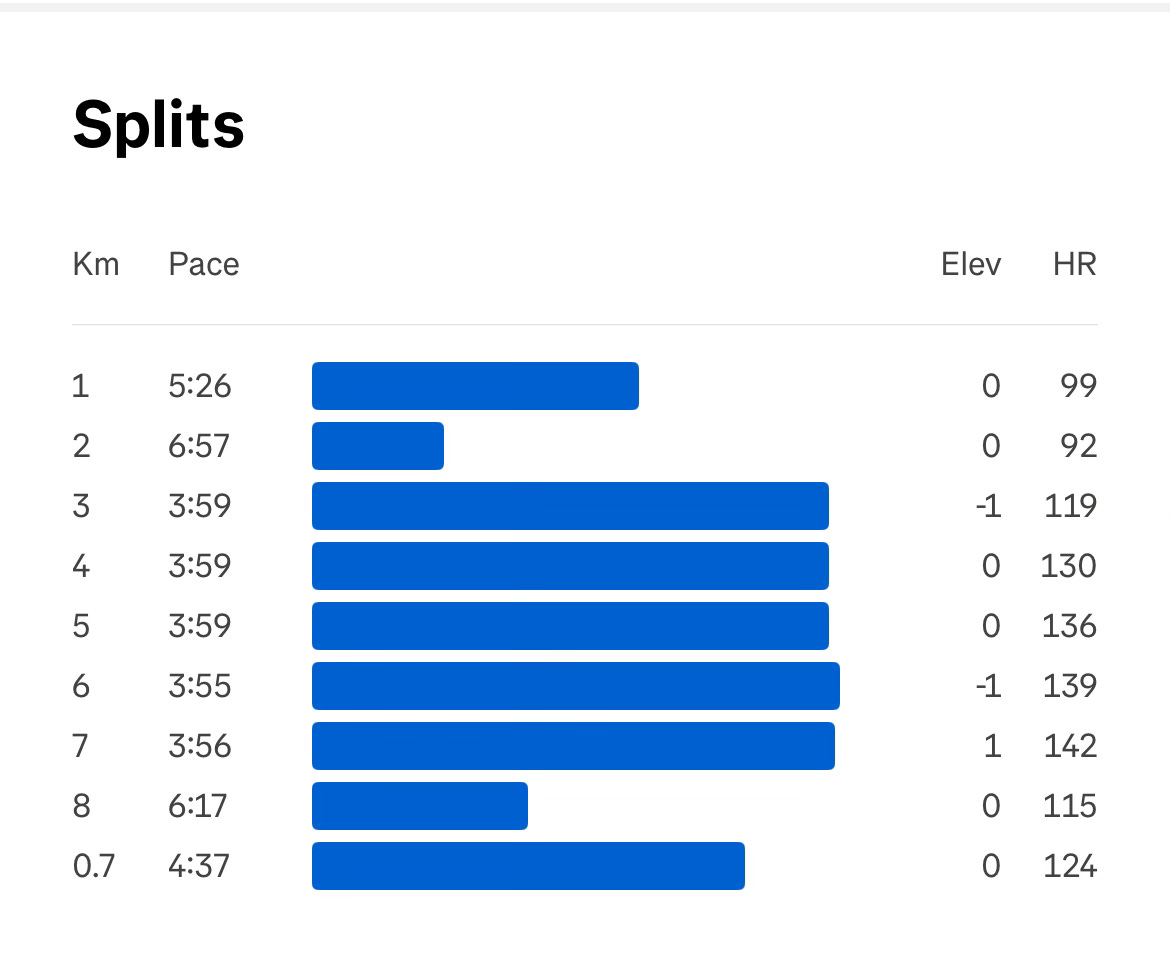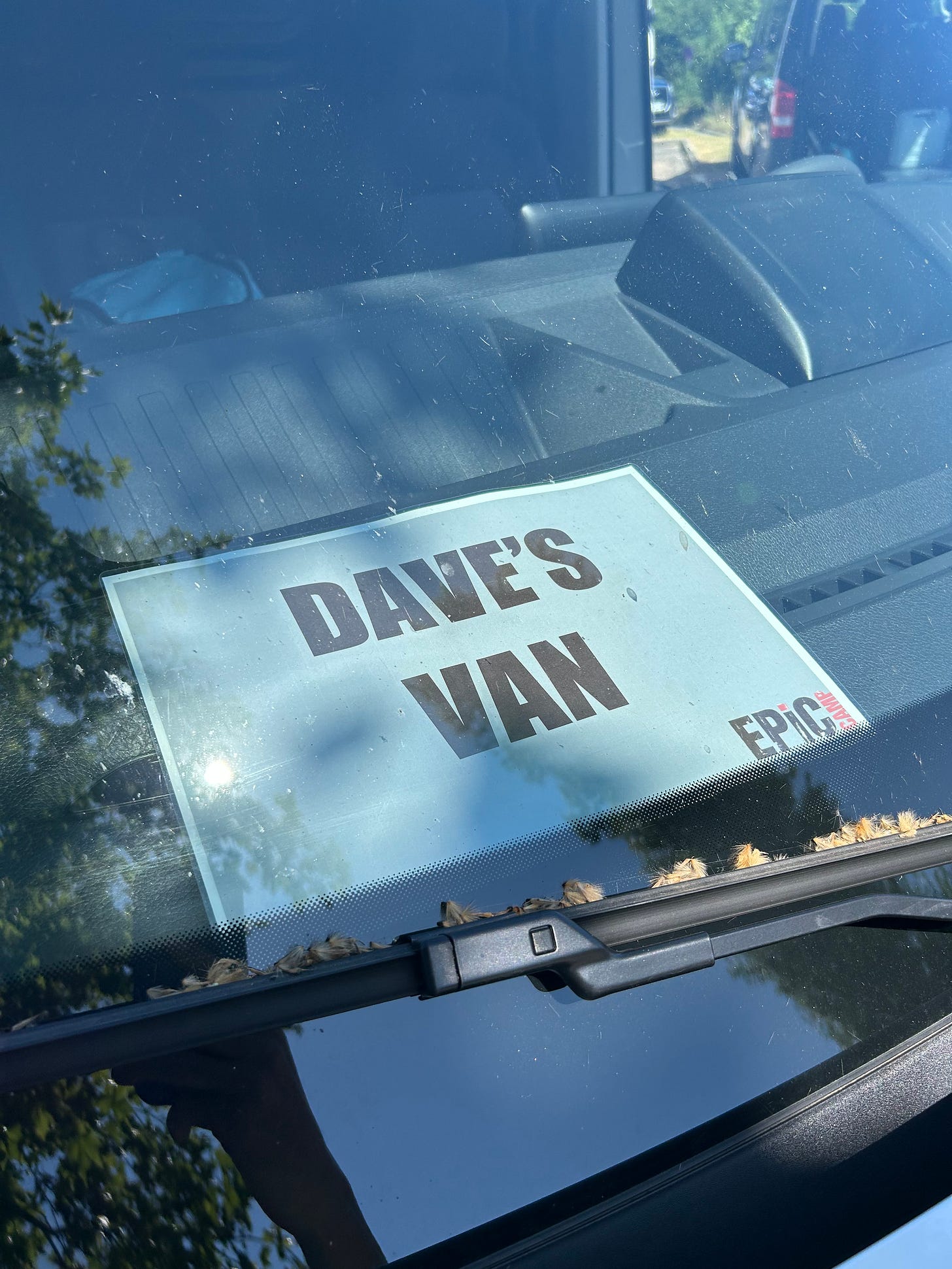Yesterday, riding in the van with Dave, I noticed there were three tracks within a short jog of the hotel. I took it as a sign that submax benchmarking would be the workout of the day.
A strange thing about endurance sport is we rarely get a chance to see how fit we truly are. We don’t see our true fitness because it doesn’t make sense to be unloading all the time. This race is the first time I’ve done a true unload this season. There appears to have been super compensation.

As an elite, I would benchmark two efforts (140 & 150 bpm). Back then, 140/150 was an approximation of the bottom and top of my Zone 2. I’d be checking those paces most weeks. My favorite test set was three miles at 140 bpm followed by three kilometers at 150 bpm.
When I was a lad… we didn’t have GPS watches so we’d incorporate benchmarking into track warmups and use highway mile markers, everything else was run on feel.
This morning I ran to a Zone 2 feeling. My Coros watch was splitting early, glad I did this at a track to get reliable data.
The true pace for the 5 km was 4:05 per km (20:26) with a max HR of 143 bpm. I was wearing my Puma super shoes.
Highest HR I’ve seen this season was 169 bpm. So the benchmark saw a peak heart rate 26 bpm under max.
Threshold heart rate at sea level is low 160s. So peak benchmark heart rate was 18-20 bpm under FTHR.
Weather was humid and I had a full sweat going at the end. Don’t think I got any heart rate elevation from the humidity. Overall temperature felt cool because I ran before the sun was high enough to shine on the track.
Ramping Back Up
Where I live, endurance sport is a socially acceptable way to live like an ascetic.1
If you came to our house then that line would make you laugh. The Byrn Household is long way from minimalism. Perhaps the desire to strip things down is a reaction to what I see around me? Perhaps I’m fooling myself.
Whatever my motivation, the simplicity of work-sleep-train is a favorite place to visit. Training camps have always been my favorite type of vacation.
As I wrote earlier in this series, when life forces you to dial down sport, it doesn’t mean you’re finished. It does mean you’ll need to temper your expectations until such time as you can ramp things back up.
And what might ramping back up look like?
The chart below shows the profile of a Top Amateur getting ready to race long. Most of my speedy peers are not training at this level but… as a result of this volume, I’ve been finishing in front of them.
It is possible to get close to my level on less work. If you figure it out then drop me a line because I want to follow you and learn. The people racing around me have been at this for their entire adult lives.
I don’t think I could have ramped any quicker.
Year One: 12-15 weekly hours. Nearly all Green Zone.
Year Two: 10-16 weekly hours. A big build in the summer that ends with a long race (Alpe Tri).
Year Three: 10-16 weekly hours. A huge build (3 months of 20-hour weeks) ending with an Ironman.
If you don’t make the space for volume then better to focus on shorter races.
I keep my 14 year old son focused on his 5K run and 400m swim. There is no rush to go long.
If your event is a running race, you will get a better outcome using a multisport approach.
If you don’t do running races then add a bit of running to your program.
A little bit goes a long way for bone health. I’m talking about building to the point where you can run 5K easy once or twice a week.
12 years ago, I made a mistake stopping running completely. I could have saved myself a lot of hassle with a couple short weekly runs. Foolishly, I thought short runs were not worth it. Short runs are absolutely worth it.
Same deal with swimming. A weekly easy swim (1,500 to 2,000 meters) is a handy life skill.
My volume-based approach is not feasible for most folks given their current life structure. Life structures can be changed, particularly if you know exactly what you want. I wanted to see if I could get fit again.
Why commit so much time?
I love it. If you don’t deeply love the process then find something else to do. We don’t get the time back.
I’m a better person. My lifestyle crowds out counterproductive thoughts-habits-actions that creep into my life.
…but only to a point. My challenge is avoiding sport taking over my entire life.
Choose Wisely.
Endurance Essentials eBook Page
See Once A Runner, How to Skate a 10K, Assault on Lake Casitas or any of a number of books about what-it-takes. Different sports. Same approach.






Feels like that first couple of years rebuilding metabolic conditioning and tissue capacity can't be done any quicker for those in our age group coming off an extended break. For me, it's been those typical mid-forties lifestyle niggles that have been the hardest to overcome (plantar fasciitis, shoulder impingement.) Every year it becomes more difficult to push back the accumulation of hours spent sitting in front of a computer and the stress-load of work. Restructuring your life to your goals feels like table-stakes for age-groupers with families. When you think in terms of "doing it quicker," that restructure must become more extreme.
Hi Gordo, this is a great summation/ overview.
Can you expand on each of these sentences?
I could have saved myself a lot of hassle with a couple short weekly runs.
- What hassle could you have avoided? Where would you have fit them?
Foolishly, I thought short runs were not worth it.
- Eg, did you originally think them too costly for the benefit?
- What changed your mind?
Short runs are absolutely worth it.
- How are they worth it? How did you find out?
Thanks -